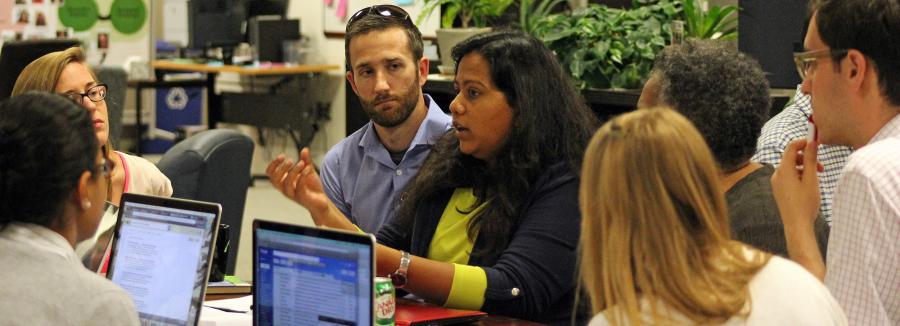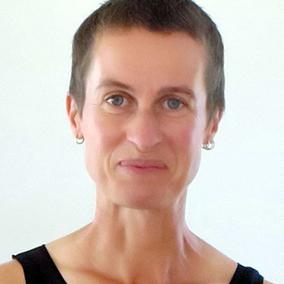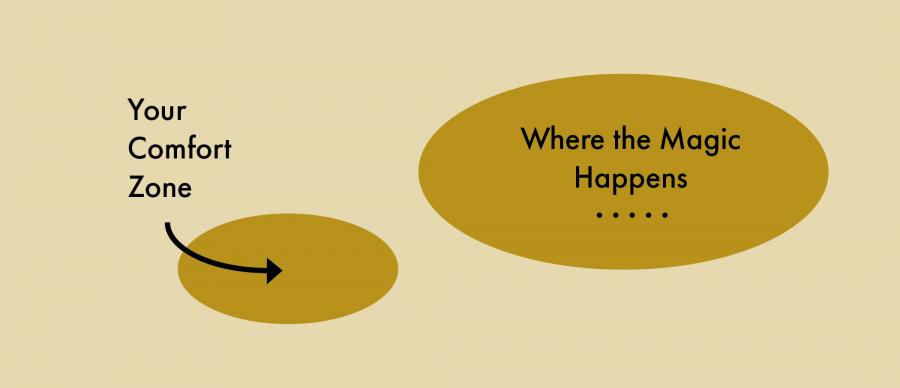In this interview, Dr. Rebecca Freeth explains the importance of prioritizing collaboration among research teams and outlines key learning strategies to leverage collaboration as a tool to advance project goals.

We are only just beginning to understand the impact that highly collaborative team research can have in addressing vexing socio-environmental (S-E) challenges. In a recent SESYNC interview, Dr. Rebecca Freeth explains the importance of prioritizing collaboration among research teams and outlines key learning strategies to leverage collaboration as a tool to advance project goals.

Freeth (pictured at left) wears many hats in the world of collaboration, facilitating dialogue on issues such as race, working as a Senior Consultant at Reos Partners,, and having a Research Affiliate role at the Institute for Advanced Sustainability Studies in Potsdam, Germany. As a South African, Freeth has always found supporting effective collaboration to be “personally significant” after witnessing the dismantling of apartheid law in South Africa. Seeing that rebirth of a nation first-hand showed her the importance of reaching across divides and recognizing the vital role of meaningful collaboration to facilitate positive change.
Freeth has written about collaboration throughout her career. Our interview discussed her article “Learning to Collaborate while Collaborating: Advancing interdisciplinary sustainability research,” published in Sustainability Science with her coauthor Guido Caniglia. This article delves into key strategies to enhance collaboration among scientific teams working across different disciplines, in a process also known as interdisciplinarity. Today, interdisciplinary teamwork is increasing in popularity as an approach to scientific problem solving. Researchers in many fields that intersect with S-E issues, such as sustainability, are being encouraged to collaborate across disciplines to tackle the breadth of these complex S-E problems.
Freeth’s article situates research teams as social systems comprising unique personalities and perspectives, rather than purely a technical taskforce, in order to fully actualize research goals and ambitions. This viewpoint means tapping into the “potential of people understanding each other and therefore finding ways to work with each other, even when they fundamentally disagree,” Freeth remarked. This approach pushes teams to prioritize the quality of their collaboration with the same fervor that they monitor the quality of their scientific progress.
The article’s central focus is summed up in the title, “Learning to Collaborate while Collaborating,” a strategy that Freeth breaks down into two main parts. The first component, learning to collaborate, focuses on debunking an assumption in academia that scientific prowess equips researchers with collaborative skills. In practice, this is not the case, and team leaders are encouraged to lead a thoughtful orientation to developing their teams collaborative skills in addition to technical abilities. Freeth suggests hosting a series of workshops before and/or during the project to share theories of interdisciplinary teamwork, case studies, and reading materials to create a common knowledge base for collaboration.
The second component is about the importance of learning while collaborating. Freeth shares that “The real rich, fertile ground for learning is in situ. It’s to have experiences of trying to collaborate and often falling short of your ideals of what a collaboration can be.” This approach builds on the theoretical basis for collaboration by creating an atmosphere for discovery, where teams can use real-time experiences as a basis for learning.
One tool to accomplish the strategy of learning to collaborate while collaborating, from the fields of experiential and relational learning, suggests creating a forum for pausing, reflecting, and communicating. These moments of contemplation are often guided by experiences of discomfort or conflict within collaborations. Freeth says the practice of establishing rhythms of scientific work and experiential learning allows principal investigators to create “a really lively learning process that’s not just about the subject matter at hand but that’s about the experience at hand.” She also suggests posing the following questions during group meetings, by allocating 5 minutes for participants to respond and 10 minutes for group discussion:
- What am I learning about our research topic?
- What am I learning about teamwork?
- What am I learning about myself as a researcher and as a member of this team?

This line of questioning creates a reflective and reflexive research practice. Integrating this practice into your meeting design encourages leaning into discomfort, rather than withdrawing when misunderstandings arise. Freeth points out that withdrawing or staying inside your comfort zone can often look like “retreating to what is familiar—my own office, my own discipline, my own colleagues.” Pausing to acknowledge the possibilities that exist outside of the familiar, she said, can motivate team members to move outside their comfort zones.
At this time of writing, we find ourselves in the midst of the COVID-19 pandemic. Research teams now have the added challenge of achieving high levels of interdisciplinarity in a virtual setting. In her own recent experience facilitating group collaborations virtually, Freeth touts Zoom and other online communication as indispensable platforms for teams, “in part because they can make the task of communicating more intentional.” Freeth advocates setting up structured online meeting schedules that include time for trust- and relationship-building among participants, who may be meeting for the very first time online. The immediacy of connecting and the lack of distractions, like an array of treats in SESYNC’s kitchen, “actually enables the kind of directness of the conversation—the focus and the clarity about what it is we’re doing here,” she said.
Collaboration is a complex process, but Freeth’s extensive experience and passion for collaborative teamwork makes her approach in “Learning to Collaborate while Collaborating” a North Star for the interdisciplinary research community. Ultimately, there are endless possibilities in what researchers can uncover through scientific inquiry, but when they shine that light of curiosity onto a scientific collaboration, that is where the magic happens.
To view in your browser and/or download the article, click on the PDF below.